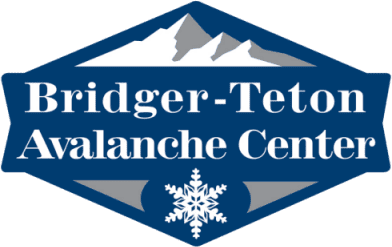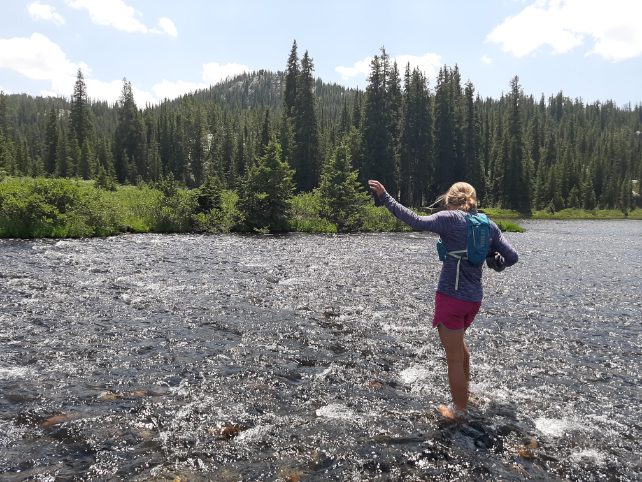Being able to hike, ski, and explore on the BTNF from her backyard in the foothills of the Wyoming Range while growing up was just life for Gracy Carpenter. “My parents are former NOLS instructors; spending time outside on the forest was just life when I was a kid,” Gracy says. While she enjoyed these adventures, she didn’t appreciate how unique it was to have a national forest in the backyard until she started bringing friends from college home to her parent’s house. “Their eyes would light up, and they’d say, ‘This is where you grew up?!’”
Working on the trail crew for the BTNF’s Pinedale Ranger District during summers in high school and college gave her added appreciation for the forest, and it was while on trail crew that she met her now-husband, Scott. The two spent time in California after Gracy finished college in the Bay Area, but, “when we had our first child we moved back to Wyoming because it is such a wonderful place to raise a family,” she says.
Today, Gracy and Scott and their two kids, now aged 8 and 10, do a lot on the forest: “We hike and fish, and also ride mountain bikes and kayak,” Gracy says. “My children always remind me to take time to be still and observe.” The family stayed in the front country when the kids were babies but have started doing some backpacking too. Gracy hasn’t just introduced her kids to the natural world, though. She taught preschool for two years and during this time designed and spearheaded a pilot program, “Forest Fridays,” that took a whole class of three-year-olds outside. “Showing super young learners that they are a part of the environment as opposed to outside of it—it was awesome to witness their responses,” she says.
Gracy joined the Friends board because, “ Growing up and recreating in this area, returning as a young mother, and the experience of working on the Forest Service trail crew gave me a depth of perspective that not only is the Bridger-Teton something special, but also that we need to protect it as a resource so that everyone can enjoy it well into the future. It takes more than one federal agency to keep a place as large and diverse as the Bridger-Teton healthy.”
(Gracy’s photo was taken by her friend Gretchen Yost Photography.)
Tip for watching wildlife:
“I love watching wildlife on the forest,” Gracy says. “From the macro invertebrates in mountain streams and fragile stonefly casings to great blue herons and moose—they are all amazing and depend on us to give them ample space and be good stewards of the ecosystems they depend on for their survival. Small streams, swamps and bogs are full of fragile life. Travel and camp on durable surfaces and do not put any human or animal waste into bodies of water. There are rules about how far you should stay from larger animals—25 or 100 yards; easier to remember is to respect the animals and not interfere. If an animal is reacting to your presence, you’re too close. Know before you go and read local news postings or trailhead signs. Is there a seasonal closure for wildlife? Are your binoculars handy?”
Don’t toss that trash: “That wrapper counts,” Gracy says. “In Wyoming’s climate, orange peels don’t decompose for years. I know there are big issues facing the forest; one thing I feel like I can do my part with personally is to help keep the landscape beautiful and clean. I pack out everything that I bring in with me, and if I see other trash along the trail, I’ll pick that up, too. This is a solvable problem if we all do our part.”


